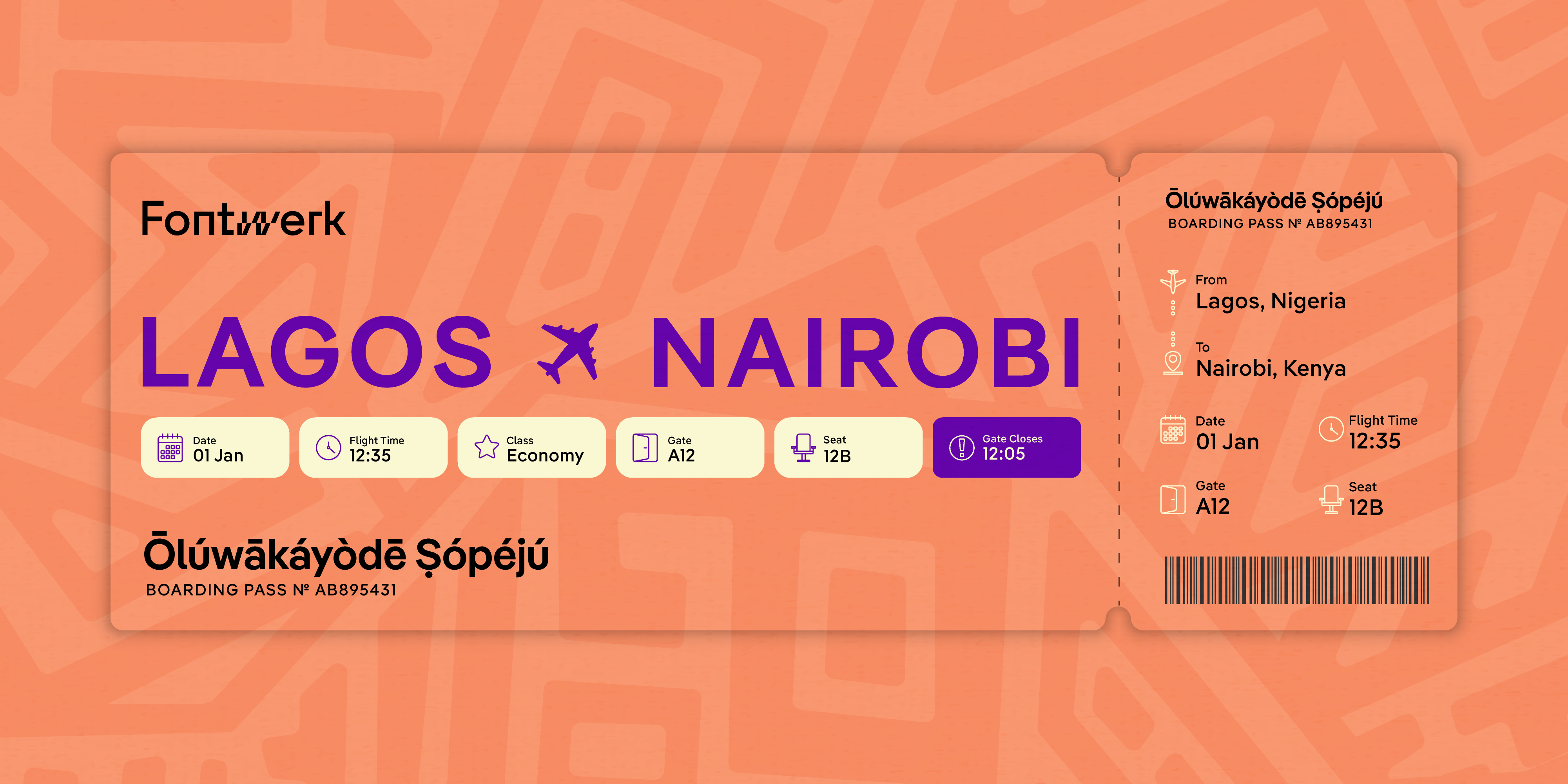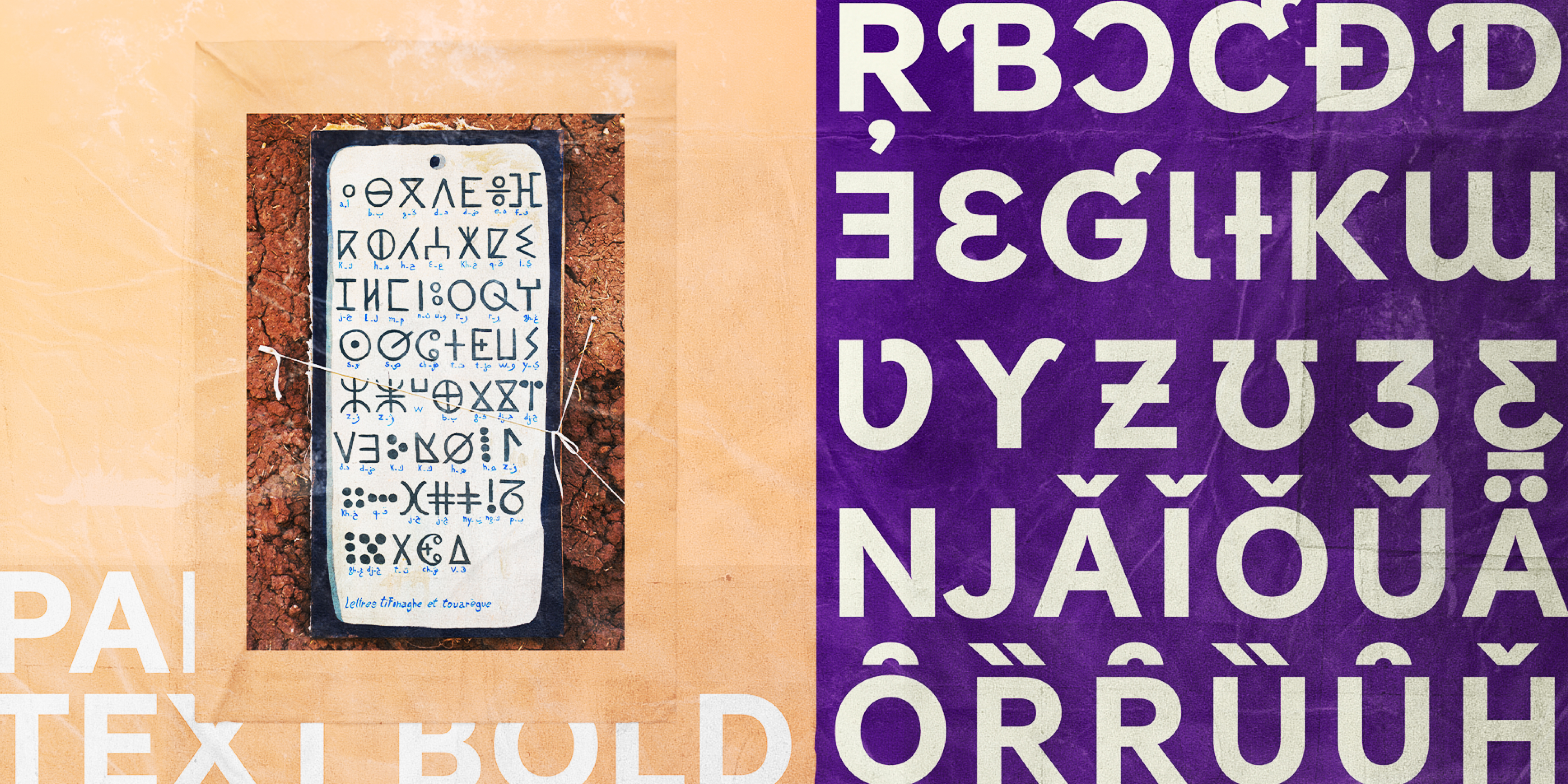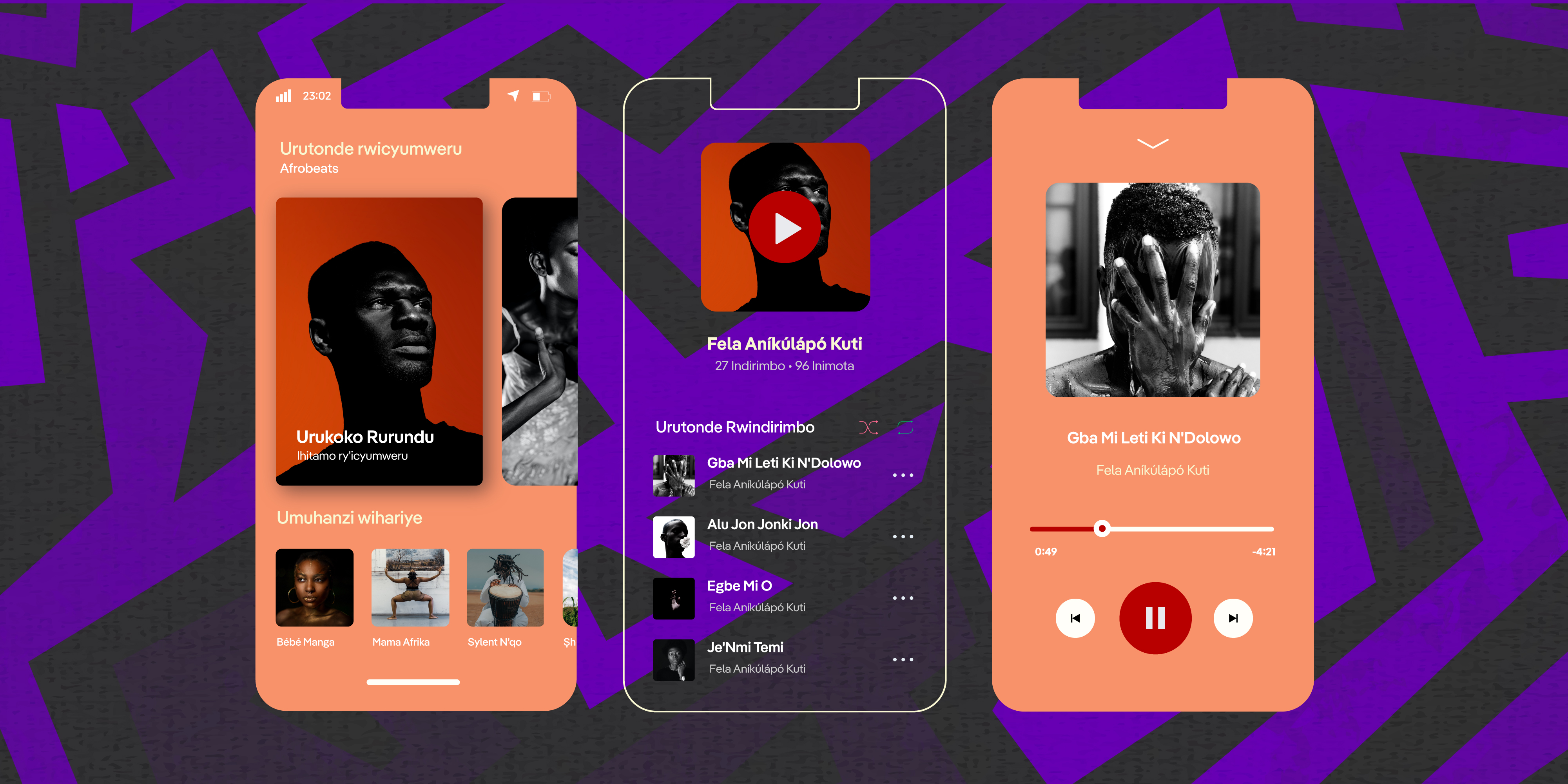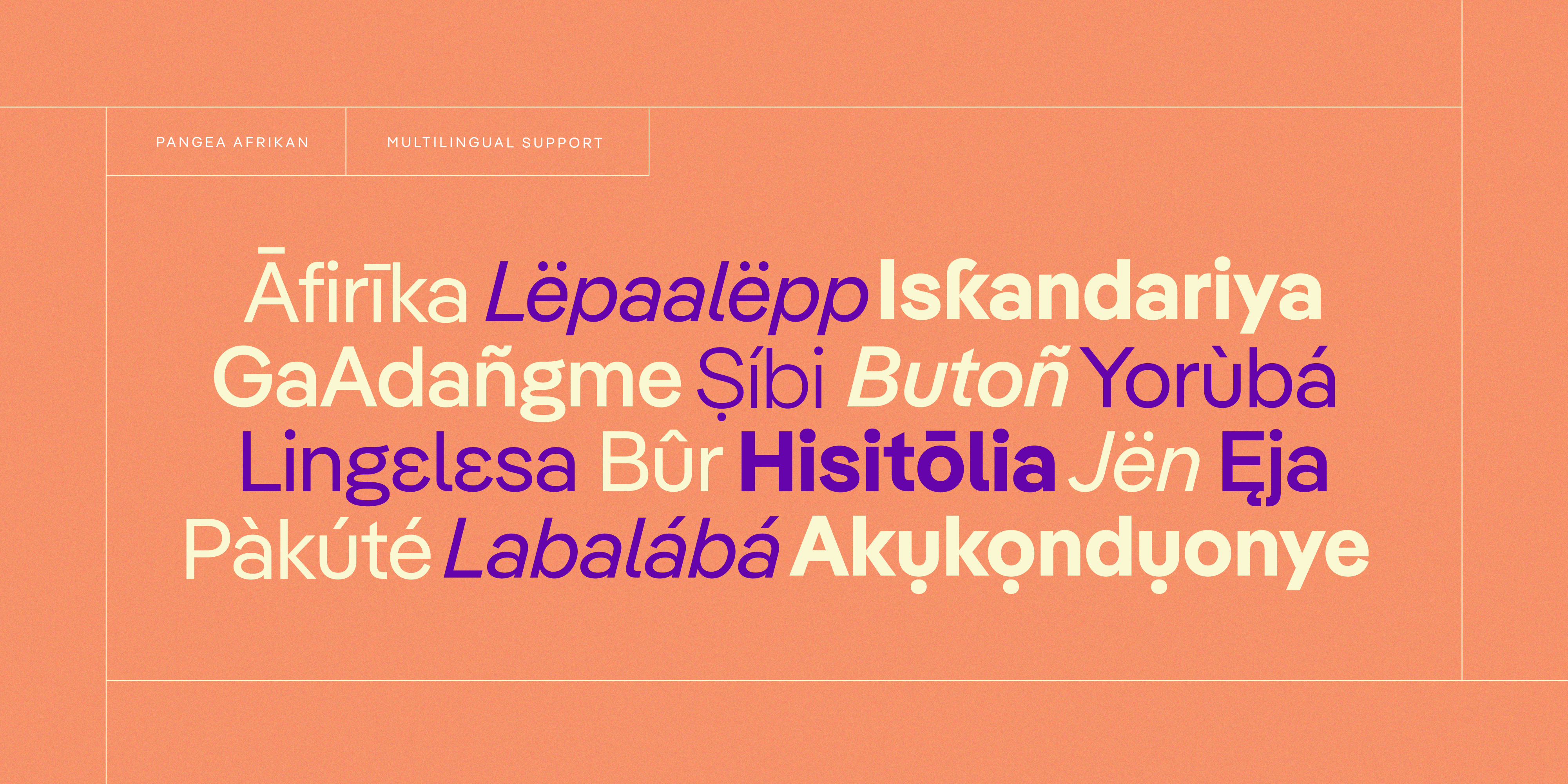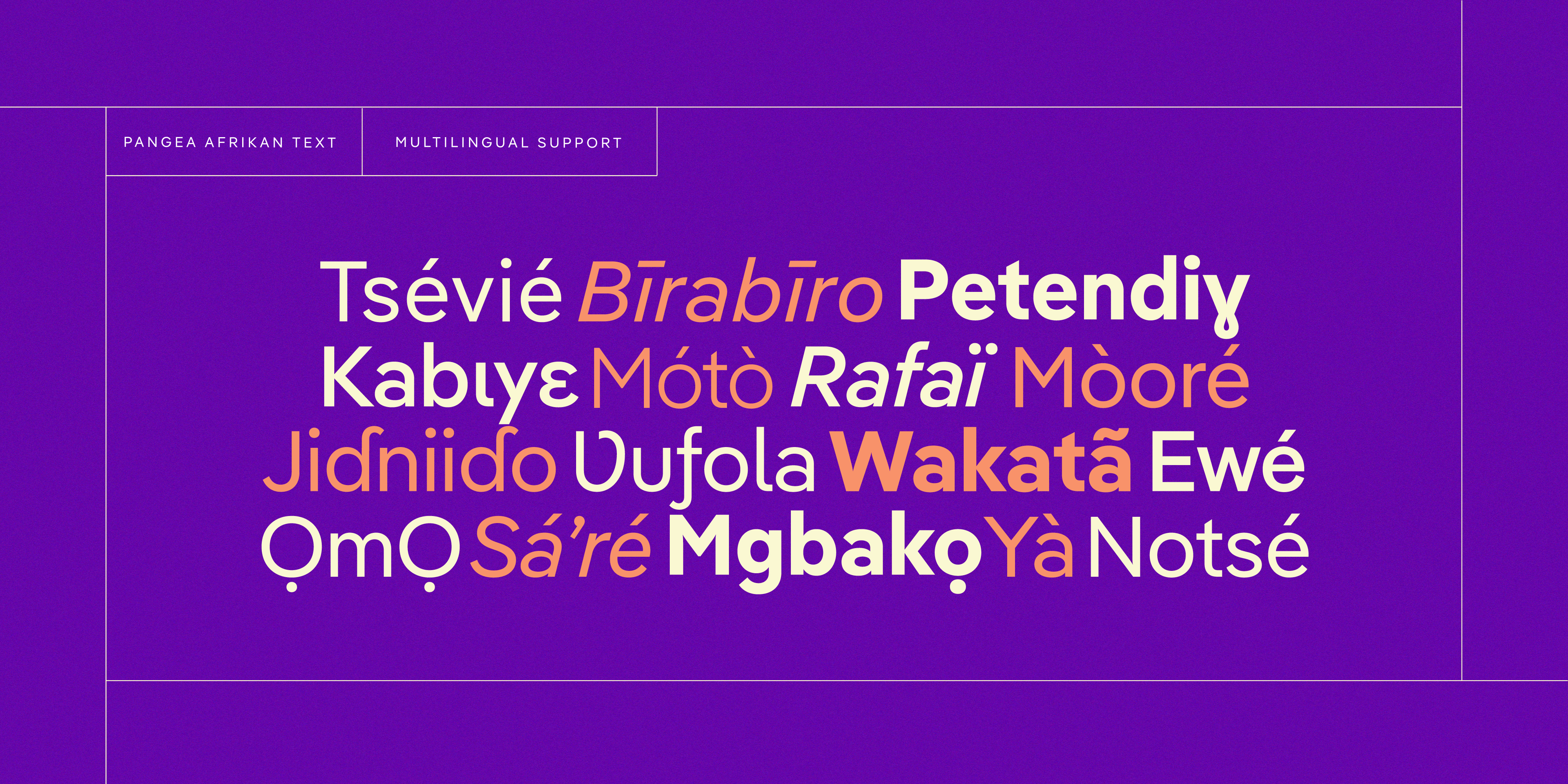rom the outset, Pangea included European Latin, Greek, Extended Cyrillic (including overlooked languages such as Kyrgyz or Bashkir) and Vietnamese as well as characters for the transcription of Arabic and Sanskrit. The next language extension milestones planned are Hebrew and Arabic (Persian, Urdu, Dari as well as Pashto).
Designer Christoph Koeberlin sees Pangea as an inclusive typeface family. Its name refers to his approach of considering different cultures and continents as part of a common whole. His continuous language extensions challenge Western conventions, as more often than not successful typefaces usually only represent the alphabets of Europe and America. Pangea Afrikan marks an important milestone in this respect: it adds Latin African to its language toolbox. Providing support for languages including Hausa, Yoruba, Igbo, Lingala, Mende, and Umbundu, as well as some indigenous North American languages such as Lushootseed and Navajo–the languages of over 430 million people.
